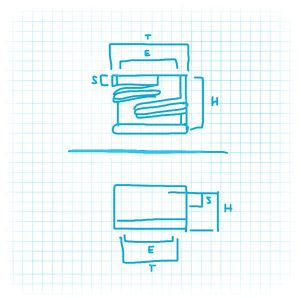Selecting the appropriate cap and neck finish for your packaging container is a crucial step in the packaging design process. Every bottled product, whether it’s a beverage, beauty product, or pharmaceutical, requires a compatible cap and neck finish to ensure proper sealing and functionality. In this guide, we’ll explore common container cap and neck finish options, standard neck measurements, and methods for measuring neck finishes accurately.
Identifying Closure Sizes #
Continuous thread closure sizes, also known as screw thread caps, are typically denoted by two numbers separated by a slash. Understanding these numbers is essential for choosing the right closure for your bottle. Here’s what these numbers signify:
- Diameter (First Number): This measurement, expressed in millimeters, represents the outer diameter of the bottle’s thread or the inside diameter of the cap’s opening.
- Thread Style (Second Number): The second number indicates the specific thread style used for the closure. Since the closure industry doesn’t always follow uniform standards, it’s advisable to source caps and containers from the same manufacturer whenever possible to ensure compatibility.
Standard Neck Measurements #
 To make informed decisions about cap and neck finishes, it’s crucial to grasp the standard neck measurements:
To make informed decisions about cap and neck finishes, it’s crucial to grasp the standard neck measurements:
- T Dimension (Outer Diameter of the Thread): The T dimension plays a critical role in determining the compatibility between the closure and the bottle. The tolerance range of the T dimension is a key factor in the closure’s secure fit.
- E Dimension (Outer Diameter of the Neck): The E dimension represents the neck’s outer diameter. The difference between the T and E dimensions, divided by two, determines the thread depth.
- I Dimension (Inner Diameter of the Neck): This measurement reflects the inner diameter of the bottle’s neck. It ensures adequate clearance for filling tubes, and industry specifications require a minimum I dimension.
- S Dimension (Thread Start to Finish Top): Measured from the top edge of the first thread to the top of the finish, the S dimension is pivotal in determining the level of thread engagement between the cap and the bottle. It also affects the orientation of the closure concerning the bottle.
- H Dimension (Height of the Neck Finish): The H dimension is measured from the neck’s point where diameter T intersects the shoulder. It provides information about the neck’s height.
Measuring the Neck Finish #
Accurately measuring the neck finish of a bottle is a straightforward process:
- Outer Diameter Measurement: Start by measuring from one side of the inner wall of the neck to the other. This measurement will help you determine the diameter of the outermost threads, which is the T dimension expressed in millimeters.
- Thread Count: To ascertain the specific thread style and closure compatibility, count how many times the threads pass one another. This information is crucial for choosing the correct cap for your bottle.
In conclusion, understanding cap and neck finishes is pivotal for creating well-designed and functional packaging containers. These measurements ensure that your chosen closure fits securely and functions as intended. By grasping the nuances of standard neck measurements and how to measure them accurately, you can confidently select the ideal cap and neck finish for your packaging needs.




